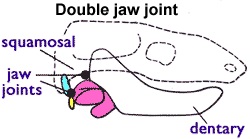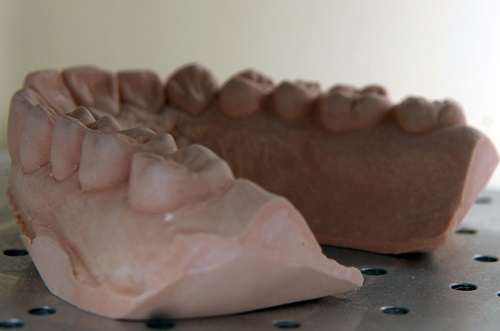TMJ Splint: Common Therapy Options for TMJ
TMJ refers to disorders of the temporomandibular joint or jaw joint. This, like all joints, works as a hinge and allows you to open and close your mouth. There’s a joint on each side of your head, and when something goes wrong with it, you’ll likely experience discomfort, have trouble controlling jaw movement, and might spend a great deal of time in pain.
Temporomandibular disorders (TMD) can be caused by a variety of different reasons. Arthritis can affect the joint just as it does other parts of your body, or you might develop a TMJ disorder because you have a habit of clenching or grinding your teeth.
Many people who suffer from temporomandibular disorders experience only occasional pain, but others are in pain chronically. They struggle to eat, talk, and sleep and might need to take drastic action when it comes to treating their problem.
How Do You Know You Have a TMJ Disorder?
Most people visit their dentist or doctor because of their TMJ symptoms. Symptoms include tenderness or pain in the jaw, pain near the ears, struggles with chewing, locking of the jaw open or closed, and overall aching muscles, pain and headaches. TMJ pain can also extend down your neck and into your shoulders. Many people also experience a clicking or popping sound when they open and close their mouth. You should contact a doctor or dentist if you are experiencing pain or you hear the clicking noises.
It’s possible for TMJ symptoms to begin moderately and if you’re lucky the symptoms will remain mild. However, many people gradually develop more and more severe symptoms and, in some cases, the pain becomes unbearable. And since it’s aggravated by normal, everyday activities like eating, talking, and yawning, it can be difficult to live with chronic, severe TMJ disorder symptoms. Get help finding a tmj dentist near you here.
Can TMJ Disorder be Treated?
There are treatment options available for those who are suffering from TMJ disorder. Even those who have only mild symptoms can benefit from some gentle, at-home therapies or a professional therapy by crystal arber that could prevent symptoms from worsening.
One of the most common and effective treatment options for TMJ disorder is splint therapy. The goal of splint therapy is to correct your bite and avoid the hassles and risks associated with TMJ surgery. Splint therapy utilizes appliances that help you gradually align your jaw and reduce the effects of TMJ disorder.
If you grind your teeth, especially in your sleep, you’re more likely to develop TMJ disorder. This means that relieving the grinding can go a long way in preventing TMJ problems and repairing them when they do occur. If you grind when you’re awake, focus on relaxing your jaw and holding it in a natural position. Obviously, when you’re sleeping, it’s impossible to know what you are doing and stop the behavior as you’re doing it.
Some TMJ disorder sufferers have found that using a night guard or mouth guard is one of the best ways to prevent nighttime grinding and clenching. The guard is a plastic device that fits into the mouth and molds around the teeth. It protects teeth from the damage that happens when people grind.
Though mouth guards and night guards are a popular treatment for TMJ disorders, they are different from splint therapy.
There are some similarities. Splints, like guards, are made from plastic. Splints are worn on a daily basis (so not just at night like guards). The purpose of wearing a TMJ splint is also different. Guards are designed to protect teeth from damage while splints are used to retrain the jaw and over tie, force it into the most natural and comfortable position. This relieves TMJ symptoms and helps to create a bite that keeps the jaw aligned properly. Over time, splints are able to provide lasting results. It’s one of the closet things to a cure for TMJ disorder there is, especially if you want something non-invasive.
Splints are available for both upper and lower teeth. Most people are given lower teeth splints because they are the most comfortable option and they have less of an effect on speaking. Since splints need to be worn round the clock, you want something that’s as unnoticeable and as comfortable as possible. There are also full and partial splints, the latter of which are worn over the back or front teeth only.
You’ll be given either a directive or permissive splint. Permissive splints are a newer option and allow the jaw to find its own position and move naturally and smoothly, unlike directive splints that hold the jaw joint in position. Most people find permissive splints more comfortable and easier to deal with when you have to wear the splint day in and day out.
Since the goal of wearing a splint is to develop a new bite, your temporomandibular joint disorder specialist will work with you to create a custom splint that meets your treatment goals, as well as your concerns about wearing a splint during treatment.
“Muscles and ligaments that control the lower jaw originate and insert into many different locations within the head and neck. When there is a problem with the temporomandibular joint and its related structures, pain may radiate to other areas of the head and neck that are innervated by the same nerve pathways. Oftentimes it is quite difficult to pinpoint the true source of the problem. Once temporomandibular disorder (TMD) has been properly diagnosed, treatment is available”
What If a Splint is Not Successful?
You’ll wear a splint for a given period of time and participate in ongoing treatment. In most cases, splints work to correct TMJ disorder, but if you’re still experiencing pain and other symptoms once you’ve completed your round of splint wearing, you might be forced to undergo a more invasive treatment option such as surgery. TMJ surgery is a last resort and in most cases, the wearing of a splint will correct the problem. It’s just a matter of how long you’re willing to try your splint until there is a successful outcome and whether you can cope with symptoms as you gradually align your jaw.
If you’d like to know more about how a TMJ splint can help you recover from TMJ disorders and cure your symptoms, we can help. A TMJ splint is an effective, affordable option that not only helps you deal with TMJ symptoms, it also corrects the problem behind your TMJ issue. To learn more or to speak to someone about whether or not a TMJ splint is right for your case, contact us to schedule a consultation.
Medically Fact-Checked & Written by Our Dental Editorial Team
You can read more about our editorial guidelines by clicking this link and learn more about the Emergency Dentists USA editorial team here.




